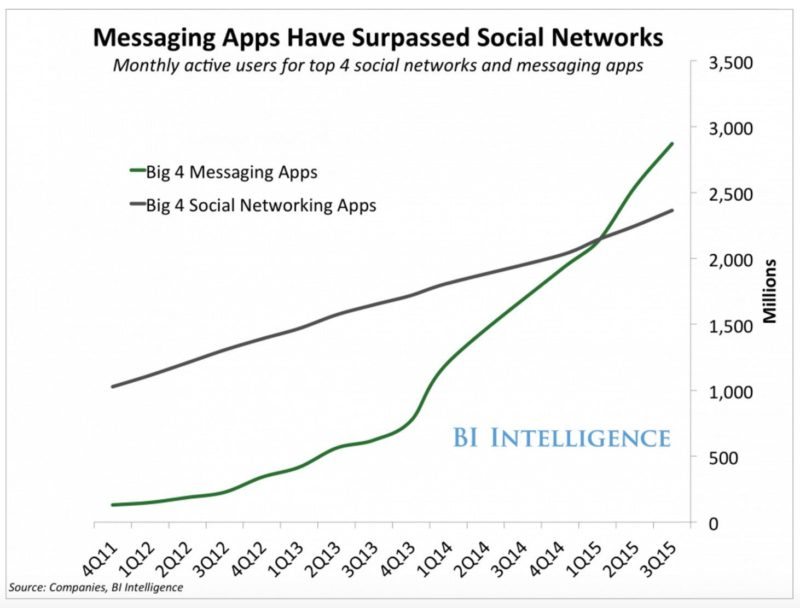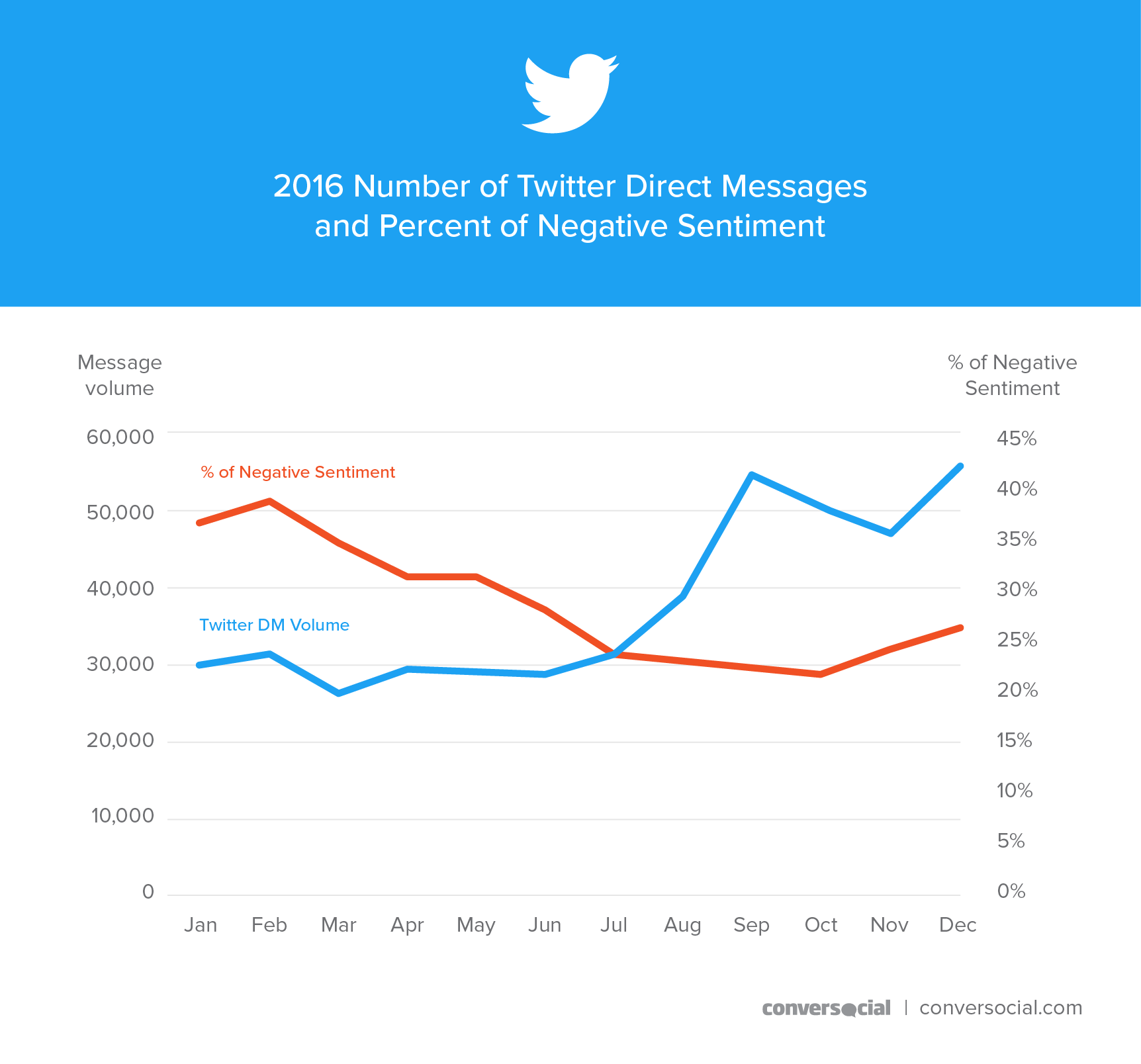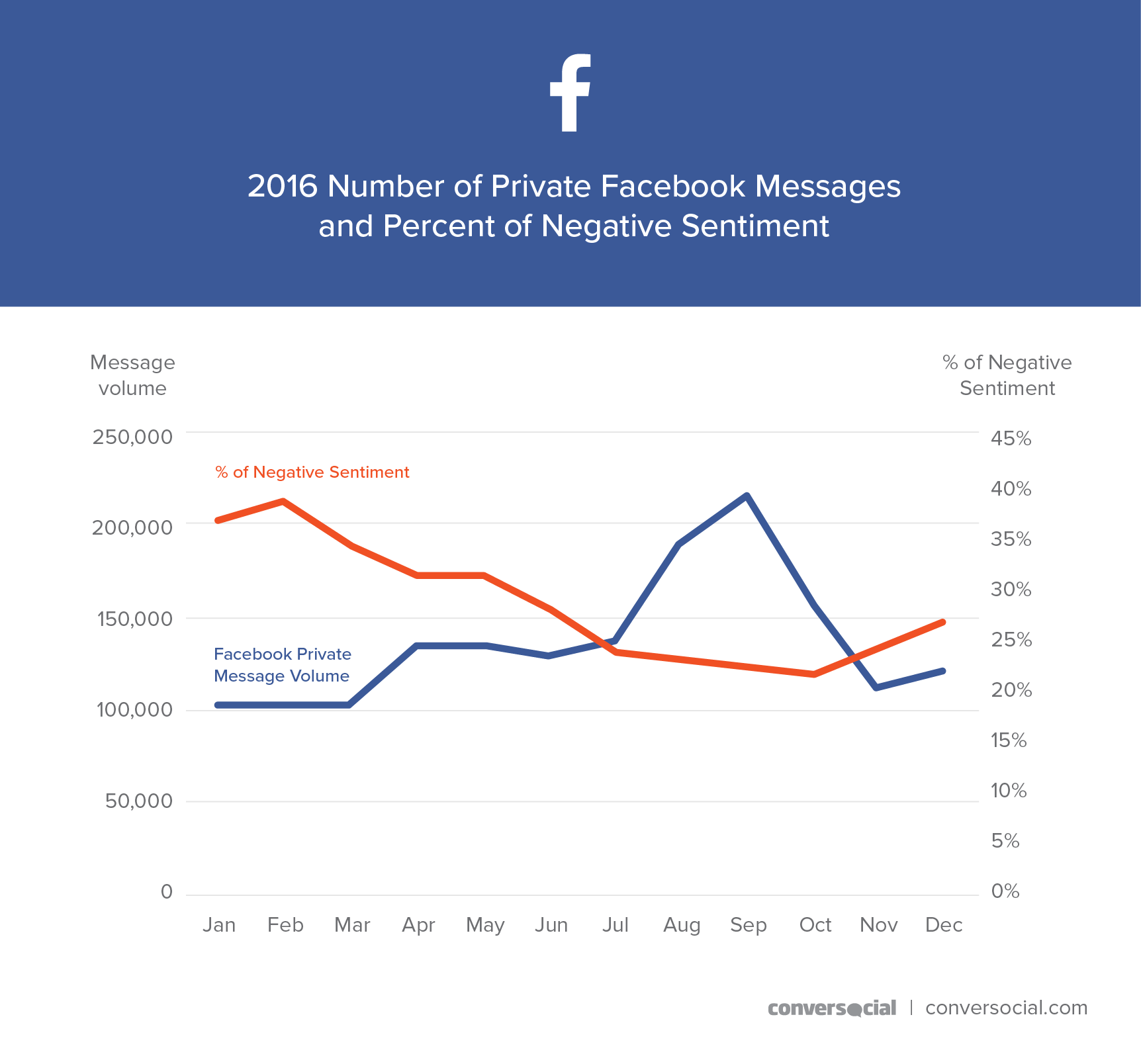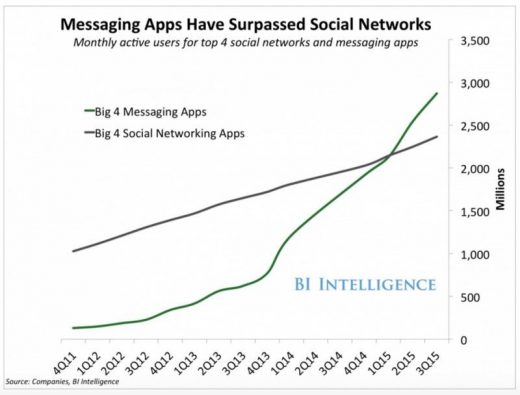How “Dark” Is Dark Social?
— January 30, 2017
Private Messaging is the New Public Posting
Social Media is one of the most potent customer service channels, providing a human connection between brands and customers (as well as among consumers themselves) that’s public and pervasive. When accessed from mobile devices, social allows customers to experience a brand’s journey in-the-moment. At the very least, it’s the most authentic, and possibly most insightful, customer engagement channel.
“Social is the channel where companies can best show that they are human, responsive and alert to customers’ concerns”
—Definitive Guide to Serving the Social, Mobile Customer
Not only has the volume of social interactions grown—in 2015, customers asked brands nearly 22 million questions on Facebook and Twitter—but the channels themselves have also “grown up” and matured. Last year, Facebook introduced private messaging capabilities via Messenger, and Twitter launched a new “click to DM” functionality. Conversocial was an innovator in integrating these product features into the customer care departments of leading brands like Hyatt. The rise of messaging apps in general, along with bots, is fundamentally changing the way many of us use social media to share and interact with brands.
Behind Closed Doors: Introducing “Dark” Social
We’ve all heard about the new “dark social,” but what is it exactly, and what does it entail? Simply put, dark social refers to social sharing that can’t be accurately tracked or picked up by web analytics platforms.
Because messaging apps have now surpassed social networks in terms of monthly actives users (see the graph below, from a Business Insider report), people are increasingly sharing links and interacting with brands through mediums that, without the proper technology, are harder to track than public datapoints such as “likes”, “shares” and “comments”.

Understandably, this phenomenon has many online marketers concerned, which has led to speculation over what measures are best suited to reverse the trend.
But the implications of “Dark Social” may not be so “Dark” when analyzed through a different lens. For instance, what happens to satisfaction and loyalty scores when customers can not only reach out to brands through their channels of preference, but also receive private responses resolving their most pressing, sensitive concerns and issues?
Case In Point: Private Resolution & Sentiment
To illustrate, I’ll analyze the growth of private interactionsfor a specific Conversocial client in 2016 against the percent of negative sentiment across Facebook and Twitter.
Definitions of metrics used:
- Conversations: Total number of conversations for which the first user content was created within the specified period
- Sentiment: The sentiment of the first piece of user content of a conversation as marked by an agent
Here are the results:


In this case, there is a clear trend showing the increase in private messaging on both Facebook and Twitter, as the number of Direct Messaging and Private Messages grow throughout the months of 2016, and a corresponding decrease in negative sentiment. That trend holds through September, when the client experienced unrelated technical difficulties. (It’s interesting to note that at the September inflection point, negative sentiment starts to rise again.)
Although there are limitations to this study, including low sample size and the possibility that the decrease in negative sentiment can be explained by another, undetermined factor, this quick-glance does raise important questions about the potential benefits of private resolution for customer service over mobile social channels.
The Benefits of “Dark” Customer Care
1. Greater Intimacy
One-on-one communication offers a more intimate, private approach to customer care versus a one-to-many public forum. Private social channels provide a secure environment for information exchange and encourage customers to build more human relationships with brands.
2. More Efficiency
The new social customer service scene exhibits the perfect balance between human interaction and efficient automation. While human support should always be available, bots can assist when a customer would like to make a purchase or a reservation, for example. Bots can easily be programmed to answer queries and handle customer complaints, which can help streamline CTAs, requests and complaints.
3. Effortless Engagement
Many brands still defer their customers from social to phone for support. With the power of social, however, customers can now skip the phone, the long waiting, the frustration… and gain direct access into the voice of the business. Forcing customers to high effort channels can make it 4x more likely for that interaction to result in brand disloyalty (CEB).
With private messaging, brands are empowered to address their customers complaints in a channel of their choosing, that is effortless to use: a recent survey conducted by Conversocial found that over half of respondents (54.4%) preferred new messaging channels—such as SMS, Facebook Messenger, Twitter, and WhatsApp—as their main form of communication with brands, primarily because of their ease of use.
Riding a New Wave of Insights
Marketers should take advantage of all the authentic insights they can gain from customers via private channels. Rather than collecting “likes”, “shares”, etc, strategy should be informed by the raw feedback and interactions customers have with brands.
Digital & Social Articles on Business 2 Community
(72)


